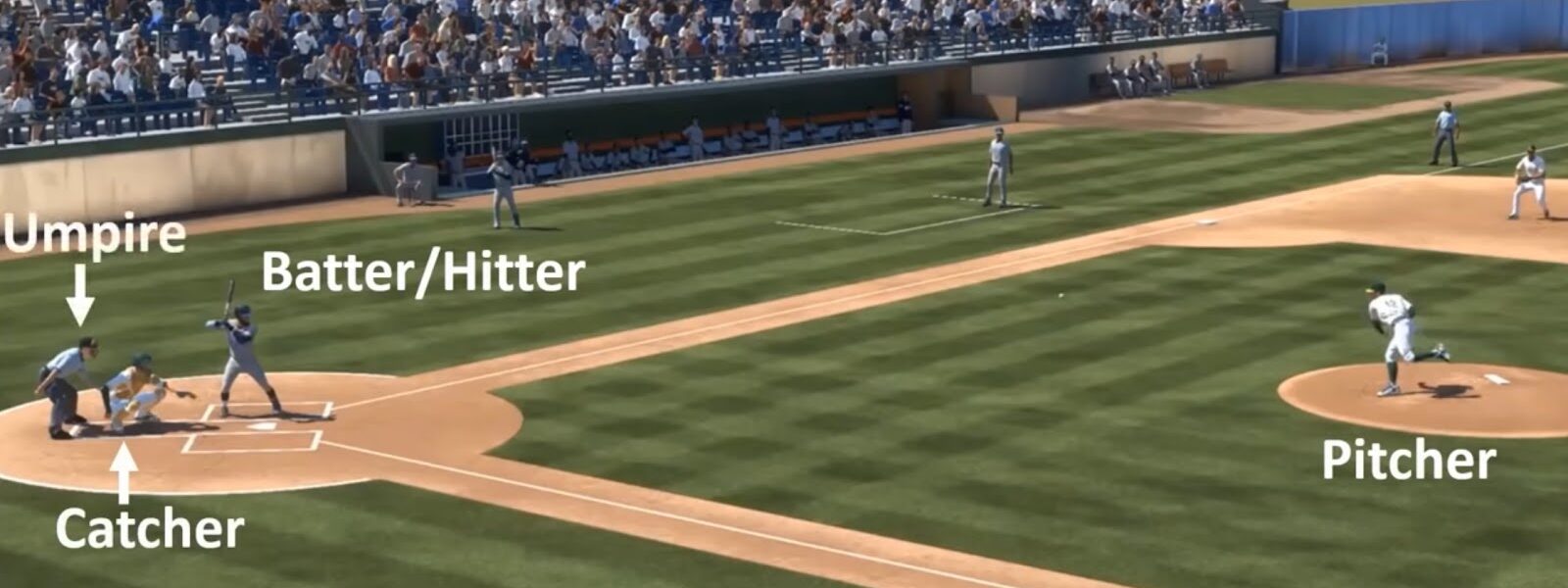Baseball, often referred to as America’s pastime, is a game rich in strategy and skill. To excel in baseball, players must hone five fundamental skills: running, fielding, throwing, hitting, and hitting for power. This comprehensive guide explores these skills in detail, providing insights into the strategies and terminologies essential for players to succeed at every level of the game.
The Essential Art of Running
Running, undeniably, stands as a central skill in the multifaceted game of baseball. Its significance spans both offensive and defensive aspects, each requiring a unique set of abilities and strategic understanding. Here’s a deeper look into the critical elements of running in baseball:
Offensive Running:
- Speed and Quickness: Essential for moving rapidly between bases;
- Strategic Base Running: Knowing when to take risks and when to play it safe;
- Reading the Ball: Anticipating the ball’s trajectory and the fielders’ actions;
- Sliding Techniques: Mastering various sliding techniques to avoid tags;
- Lead-offs and Steals: Timing and executing lead-offs and steals effectively.
Defensive Running:
- Pursuit of Fly Balls: Quick reaction to and efficient chase of fly balls;
- Covering Bases: Speed in moving to cover bases or backup other fielders;
- Cut-off Plays: Understanding and executing cut-off plays to prevent extra bases;
- Agility in Fielding: Quick footwork for effective fielding and rapid direction changes;
- Backing Up Throws: Anticipating missed catches and backing up throws.
Both offensive and defensive running are more than just raw speed; they encapsulate understanding the nuances of the game, the ability to make split-second decisions, and the physical agility to execute those decisions effectively. These elements, combined with continuous practice and keen observational skills, elevate a player’s running ability, significantly impacting their overall performance in the game of baseball.
The Art and Science of Fielding
Fielding is a collective endeavor requiring coordination and skill. Players in the outfield are tasked with catching fly balls or retrieving ground balls, then quickly relaying them to the infield. The ability to read the trajectory of a ball, position oneself correctly, and make a clean catch is crucial. Outfielders must also have strong, accurate arms to make long throws back to the infield.
Infielders, including those at first, second, third base, and shortstop, have the added responsibility of turning batted balls into outs. This might involve fielding ground balls, catching pop-ups, or applying tags on base runners. The infield requires players to have quick reflexes, soft hands for catching, and a strong, accurate arm for throwing. Good footwork is also essential, as infielders often need to position themselves quickly to make a play.
Mastering the Art of Throwing
Throwing is a fundamental skill that all players, regardless of position, must master. The ability to throw quickly and accurately is crucial for effective defense. The process involves catching the ball, transitioning it smoothly from the glove to the throwing hand, and then releasing it powerfully towards the target. Pitchers, in particular, need to have an array of throws at their disposal, each with different speeds and movement patterns to confuse batters.
The mechanics of a good throw involve proper body alignment, footwork, and arm motion. Players must align their bodies towards the target, step towards the target with the lead foot, and use their entire body to generate force in the throw. The arm motion should be fluid and controlled, with the elbow leading and the wrist snapping at the point of release.
Hitting: The Cornerstone of Offense
Hitting, a skill revered in the realm of baseball, combines physical prowess with acute mental acuity. It’s an art that demands precision, practice, and a deep understanding of its fundamentals.
The Importance of Hand-Eye Coordination and Timing
- Visual Tracking: Keeping a steady focus on the pitcher and the ball is crucial. A successful hitter must be adept at tracking the ball right from the pitcher’s hand to the point of contact;
- Anticipating Pitches: Being able to predict the type of pitch based on the pitcher’s movements and grip can give a batter a significant advantage;
- Precision in Timing: Timing the swing perfectly to connect with the ball requires hours of practice and a keen sense of rhythm and coordination.
Perfecting the Stance and Grip
- Balanced Stance: A comfortable stance enables quick and powerful movements. It should allow for easy weight transfer and provide stability;
- Effective Grip: A firm yet relaxed grip helps in controlling the bat and directing its path. The position of the hands can affect the swing’s power and accuracy.
Mastering the Swing
- Hip Rotation: Effective use of the hips can greatly enhance the power of a swing. The rotation should be fluid and synchronized with the rest of the body’s movement;
- Weight Transfer: Transferring weight from the back foot to the front foot during the swing generates more power and provides balance;
- Swing Path: The bat should travel in a smooth, level arc. A consistent swing path increases the likelihood of making contact and hitting the ball effectively.
Hitting in baseball is more than just striking the ball; it’s about the harmonious integration of physical skills with strategic thinking. A hitter must be a student of the game, constantly refining techniques and adapting to different pitchers and situations. This continuous learning and adaptation make hitting one of the most dynamic and challenging skills in baseball.
Hitting for Power: Beyond the Basics
Hitting for power takes the basic skill of hitting and amplifies it with additional strength and technique. Power hitters often have a slightly different stance and swing, focusing on generating maximum force. They use their legs and core muscles to generate torque, which translates into more powerful swings. The timing of the swing is also crucial; power hitters often start their swing earlier to meet the ball with the maximum velocity.
Power hitting isn’t just about brute strength; it’s about the efficient transfer of energy from the body to the bat and then to the ball. This requires not only physical ability but also a deep understanding of the mechanics of hitting.
Catcher Skills: The Linchpin of Defense
The position of catcher in baseball demands a unique blend of physical resilience and strategic acumen. Beyond the basic responsibilities, catchers are central to the game’s tactical aspects and the physical challenges they endure are immense.
Strategic Involvement and Game Management
- Pitch Selection: A critical aspect of their role involves selecting pitches. This requires not just knowledge of the pitcher’s repertoire but also an understanding of each batter’s weaknesses.
- Game Flow Control: Catchers often dictate the pace of the game, calming pitchers during high-pressure situations and strategizing to keep batters off balance.
- Field Awareness: They need to be aware of the game’s situation at all times, including the number of outs, the positions of base runners, and the score. This awareness influences their decisions and guidance to the pitcher.
Physical Demands and Skills
- Agility and Reflexes: The ability to quickly react to pitches, whether it’s a fastball or a wild pitch, is crucial. Catchers must have the agility to move swiftly, block errant pitches, and snap throws to bases;
- Endurance and Strength: Catching an entire game requires immense physical endurance. The repetitive act of squatting and rising, coupled with the need to wear protective gear, makes it physically taxing;
- Arm Strength: Strong and accurate throwing is essential, not just for framing pitches but also for throwing out base runners, especially during steal attempts.
Mental Resilience and Leadership
- Communication Skills: Effective communication with the pitcher and infielders is key. Catchers need to convey strategies and boost the morale of their team;
- Resilience Under Pressure: The ability to maintain focus and performance under the pressure of critical game moments is a hallmark of an exceptional catcher.
In essence, the catcher’s role is a multifaceted one, combining the rigors of physical performance with the subtleties of strategic gameplay. This position, often overlooked in terms of its complexity and importance, truly is one of the keystones in the architecture of a baseball team.
Pitching: The Strategic Heart of the Game
Pitching is more than just throwing the ball towards the batter; it’s about outsmarting the batter and controlling the pace of the game. A good pitcher has a variety of pitches in his arsenal, such as fastballs, curveballs, sliders, and changeups, each with different speeds and movement patterns. The pitcher must also be able to read batters, understand their tendencies, and adjust his pitching strategy accordingly.
Pitching also involves a significant mental component. Pitchers must remain calm under pressure, maintain focus throughout the game, and have the mental toughness to bounce back from setbacks.
FAQs: Enhancing Baseball Skills
Baseball players at all levels can benefit from continuous skill development. Whether practicing at home or coaching young players, the focus should be on building a solid foundation and cultivating a love for the game.
To enhance your hitting skills, focus on drills that improve hand-eye coordination and timing. Use a tee to practice hitting balls at different heights and angles. Additionally, soft toss drills, where a partner gently tosses the ball to you from a short distance, can help refine your swing mechanics. For advanced practice, use smaller balls to sharpen your focus and precision.
Absolutely. A simple yet effective drill is to mark a target on a wall or fence and practice throwing at it from various distances. Focus on maintaining proper form and follow-through with each throw. Incorporating plyometric exercises can also enhance arm strength, leading to more powerful and accurate throws.
Turn skill-building into games. For example, create a point system for catching and fielding drills or set up friendly competitions in batting practice. It’s important to balance skill development with fun activities to keep young players motivated and engaged.
Start with simple, age-appropriate explanations of the rules and basic techniques. Use demonstrations and hands-on practice to teach skills like throwing and batting. Encouraging questions and providing positive feedback are key to helping them understand and enjoy the game.
Game awareness can be honed by watching and analyzing professional games, understanding different playing strategies, and learning from coaches and experienced players. Practice scenarios and situational drills can also help players anticipate and react to different in-game situations.
Engage in varied practice situations to prepare for different game scenarios. Include drills that require quick decision-making and adjust strategies during practice games. Mental agility exercises, like quick reaction drills or changing game plans mid-practice, can also enhance a player’s adaptability.
In conclusion, developing baseball skills, whether at home or in little league, requires a mix of focused practice, fun, and a deep understanding of the game. Emphasizing fundamentals, encouraging curiosity, and fostering a love for the game are vital for players of all ages. Awareness and adaptability, crucial for excelling in baseball, are nurtured through varied practice, strategic thinking, and an openness to learning. With dedication and the right approach, any player can enhance their skills and deepen their appreciation for this timeless sport.




